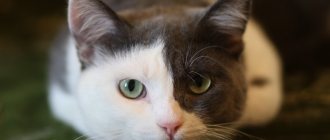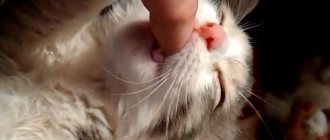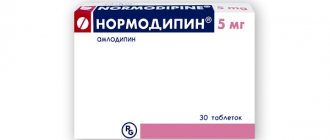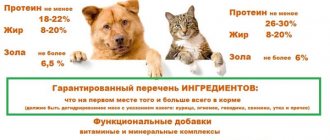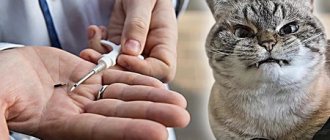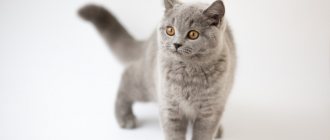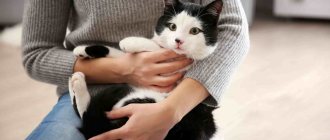- Animal cardiology
- Informational portal
- Gastroenterology of dogs
- Literature
Infusion therapy in cats and dogs
used for the treatment of shock, dehydration and correction of electrolyte and acid-base balance. Changes in electrolyte balance cannot be predicted accurately, so electrolytes must be measured. Vomiting of gastric contents often leads to the development of hypokalemia, hypochloremia and metabolic alkalosis. Loss of intestinal contents classically results in hypokalemia with or without acidosis, but hypokalemic metabolic alkalosis can occur. Vomiting in an animal leads to hypokalemia; however, animals with hyperadrenocorticism or anuria due to renal failure may have hyperkalemia. If it is not possible to immediately measure electrolytes, an infusion should be performed with saline plus 20 mEq of potassium chloride per liter, with the condition that the liquid will be administered 1 or 2 times depending on the condition. To exclude severe hyperkalemia, it is advisable to take an ECG.
The administration of bicarbonates is rarely required, because dilation of blood vessels and improved perfusion of the periphery facilitates the course of lactic acidosis. Bicarbonate is primarily prescribed to patients with severe acidosis (eg, pH
Predisposing factors
The characteristics of such pathologies vary significantly depending on geographic location. What does it mean? Well, if you and your cat live in the middle zone, then your pet is unlikely to be bitten by a tarantula, and the risk of running into a poisonous snake is much lower. Cats living in old houses are at great risk: in the past, builders often used paints with a high lead content or toxic zinc compounds, to which animals (and humans) are quite sensitive.
Packaging requirements
"Metastop" for cats can be purchased in two variations. Pharmacies offer polymer jars containing 50 tablets, or bags in cardboard packaging.
The pills are biconvex, white or cream in color. Small inclusions are allowed. In any case, each package must contain information about the manufacturer, a description of the product and storage conditions. The release date and implementation deadlines are also required.
It is necessary to pay attention to the labeling “For animals”. It is a mandatory requirement. There must also be a mark on radiobiological safety and certification.
Main manifestations
Main features include gastrointestinal and central nervous system responses. It should be noted here that the response from the intestines is recorded in almost all cases of poisoning, while nervous phenomena are more typical for young and old cats.
Here are the main clinical manifestations:
- Vomit.
- Diarrhea, gradually giving way to constant profuse diarrhea.
- Lethargy turning into deep coma.
- Poor appetite.
- Abdominal pain.
- Regurgitation (aka vomiting).
- Severe weakness, the animal practically does not get up.
- Hysteria (manifested in panic attacks and anxiety). A cat in this state may run around the house, bumping into surrounding objects and people.
- Blindness.
- Vestibular pathologies, including nystagmus (shifty eyes) and ataxia. At first glance, it may seem that the cat is experiencing dizziness.
Indications for use
The drug is a highly effective drug, so it should be prescribed by a veterinarian for treatment. You can take it before surgery to remove a tumor to slow down the growth of the tumor and increase immunity. The drug may also be prescribed after surgery to reduce the risk of developing new tumors.
Taking the drug improves immunity after illness, removes toxins and prevents the occurrence of metastases.
Main reasons
In principle, there can be very, very many predisposing factors. Below we present those that most often cause poisoning in cats and other domestic animals:
- Eating food contaminated with paints, lead from batteries, lubricants or cleaning materials. All this is most typical for those cases when the house is being renovated, but there is no way to temporarily remove the cat from the home.
- Use of dry or canned food of dubious origin.
- A poor environmental situation in a particular city also often causes symptoms of poisoning in cats.
- Low-quality care items (including combs, baskets) made from materials that have not passed the appropriate certification. Some cheap cat harnesses sometimes smell like phenol, but it is lethal for these animals!
But, as practice shows, much more often the veterinarian is faced with more “prosaic” cases. For example, intoxication from flea bites. Do you think that owners often pay attention to the fact that their pet itches from morning to evening, trying to somehow get rid of small blood-sucking parasites? Alas, no more than 20% of breeders. Many people think that “fleas are natural.” Alas, this is not true. Along with the bites of bloodsuckers, not only viral, bacterial infections and helminths can be transmitted... The saliva of these insects contains a lot of substances that do not have any positive effect on the health of the cat. In addition, bites cause the development of dermatitis and purulent inflammation of the skin. This already leads to autogenous poisoning.
Even worse is intoxication in a cat from worms. Firstly, the worms simply eat the animal, consuming almost 70% of all nutrients that the cat receives per day along with food. Secondly, parasites have a very imperfect metabolism and they throw out most of their food into the long-suffering intestines in the form of extremely toxic metabolites. An animal with “guests” in the gastrointestinal tract always looks emaciated, its hair falls out, its skin is dry and flabby. Such a cat will constantly suffer from allergic reactions that arise “out of nowhere.”
Infusion solutions
Infusion is the main method of detoxification in hospitals
Detoxification infusion therapy is used primarily to increase the volume of circulating blood with the subsequent removal of excess fluid through the urinary system.
A method called “forced diuresis” has become widespread, since it is possible to remove about 95% of hydrophilic poisons with urine. Massive infusion is used in all areas of medicine, diseases in which are associated with exo or endotoxicosis.
It is worth noting that in addition to general cleansing properties, detoxification solutions have their own characteristics of pharmacological action and are divided into groups such as:
- Crystalloids;
- Colloids;
- Blood products.
Classification of hypovolemia correctors
Each of these groups is used for a specific purpose.
Crystalloids
Crystalloids are solutions based on isotonic sodium chloride solution. They may also contain other salts.
Used to replenish blood volume, correct water-electrolyte balance, and dehydration. Indications for the use of crystalloids are all antitoxic measures, including detoxification for alcoholism.
The most prominent representatives of crystalloid solutions are:
Disol;
Trisol;
Acesol;
Sodium chloride 0.9%;
Ringer's solution.
These drugs are present in every health care facility and are used not only to correct the electrolyte composition, but also to dilute certain medications.
Interesting to know: crystalloids are considered safe solutions and are often prescribed in inappropriately large volumes. Meanwhile, the high salt content in them can disrupt osmotic processes in the body, provoke the development of internal edema and other dangerous complications.
Colloids
Colloids (detoxification blood substitutes) are solutions based on organic compounds that have the property of active osmosis. They increase the amount of fluid in the intercellular space, bring blood pressure back to normal and maintain blood pressure. Used for severe intoxication, accompanied by hemodynamic disturbances and a decrease in blood volume.
Blood substitutes for detoxification action include the following names of solutions in their list:
- Poliglyukin;
- Reopoliglyukin;
- Stabizol;
- Voluven;
- Volutelight.
The previously popular hemodesis is not used for alcohol intoxication and other types of poisoning. The drug was banned in the Russian Federation in 2005. The reason for this was poor tolerability and low effectiveness of the product. It is believed that the effect of the drug is almost entirely based on the placebo effect.
Blood products
Blood products are albumin, erythrocyte suspension, platelet and leukocyte suspension. However, in toxicocology, fresh frozen plasma is more often used - a liquid fraction of blood purified from formed elements. The proteins contained in this substance bind toxins, which allows the drug to be used as an antitoxic agent.
Blood products
In addition to binding poisons, plasma helps increase the concentration of proteins in the blood, increases the volume of fluid in the bloodstream, stabilizes blood pressure, and stimulates the immune system. Therefore, the product is used not only to remove toxins, but also to treat the underlying pathology.
Diagnosis
The problem with poisoning is that the doctor needs to know exactly the cause of the pathology. Simply put, professional diagnosis becomes vital. You will need to provide the doctor with all the information about your cat, including any exposure to hazardous substances (if possible, of course). After recording the history, the veterinarian will perform a complete physical examination. Laboratory tests in this case include a blood test, including biochemistry, and a urine test. The results of these measures provide valuable information for making an initial diagnosis.
General Information and Concepts
Drugs of the detoxification group are taken to eliminate toxic effects and remove harmful substances from the body. The goal is achieved by stimulating the physiological cleansing function performed by the liver, reducing the concentration of toxins, and changing the volume of circulating blood.
The drugs are used in the treatment of poisoning of various origins, renal failure, intoxication, liver pathologies, infectious infections, and allergic manifestations. As part of an integrated approach to treatment, doctors use hepatoprotectors, infusion solutions, sorbents and other means for intracorporeal detoxification.
Therapeutic measures
Only after receiving all the data and test results does treatment begin. Symptomatic therapy involves the prescription of drugs that support cardiac and respiratory activity, as well as the infusion of buffer mixtures that relieve intoxication. If it is known what exactly caused the poisoning, antidotes are given. Unfortunately, in most cases it is necessary to limit oneself to symptomatic treatment alone, since it is not possible to obtain accurate data on the toxin. This is very dangerous, as deaths are common in such conditions.
Infusion therapy in cats and dogs
used for the treatment of shock, dehydration and correction of electrolyte and acid-base balance. Changes in electrolyte balance cannot be predicted accurately, so electrolytes must be measured. Vomiting of gastric contents often leads to the development of hypokalemia, hypochloremia and metabolic alkalosis. Loss of intestinal contents classically results in hypokalemia with or without acidosis, but hypokalemic metabolic alkalosis can occur. Vomiting in an animal leads to hypokalemia; however, animals with hyperadrenocorticism or anuria due to renal failure may have hyperkalemia. If it is not possible to immediately measure electrolytes, an infusion should be performed with saline plus 20 mEq of potassium chloride per liter, with the condition that the liquid will be administered 1 or 2 times depending on the condition. To exclude severe hyperkalemia, it is advisable to take an ECG.
The administration of bicarbonates is rarely required, because dilation of blood vessels and improved perfusion of the periphery facilitates the course of lactic acidosis. Bicarbonate is primarily prescribed to patients with severe acidosis (eg, pH
Methods of infusion therapy
Subcutaneous administration of drugs. This method is suitable for quickly administering small amounts of liquid. Applicable to patients with mild dehydration and in stable condition.
Intravenous infusion. In more severe conditions, severe dehydration, blood loss, or shock, an intravenous catheter is installed in the animal. This allows you to administer certain volumes of fluid at the speed desired by the doctor, since this procedure cannot be performed quickly.
With intravenous infusion, the animal is left in hospital (day or daily).
Alkylating agents
This is the name for antineoplastic agents with pronounced antitumor and cytostatic activity. After taking the drugs, intermediates, which are particles of alkanes, attach to DNA, disrupting its structure. Malignant cells lose their ability to divide. The process of their death begins, the result of which is disintegration into individual particles. In oncology, treatment with the following alkylating agents is especially common:
- Cyclophosphamide;
- Chlormethine;
- Ifosfamide
- Altretamine;
- Melphalan;
- Busulfan;
- Chlorambucil;
- Karmustine;
- Streptozocin.
The drugs are prescribed for cancer affecting the mammary glands, large intestine, digestive tract, pancreas, reproductive and urinary systems.
Antitumor antibiotics
This is a special group of cytotoxic agents, the active ingredients of which interrupt the division of degenerated cells. Patients are especially often treated with anthracyclines and bleomycins, but antibiotics, the predecessors of modern anticancer drugs, are also successfully used. The greatest therapeutic effectiveness is typical for the following antitumor drugs:
- Dactinomycin;
- Daunorubicin;
- Doxorubicin;
- Bleomycin;
- Mitomycin.
Antitumor antibiotics are used primarily in combination with other drugs, but in some cases they are also used as monotherapy.
Medicines similar in mechanism of action - table
| Name | Release form | Active Ingredients | Indications | Contraindications | Negative reactions | Price |
| Polyferrin A | Solution for intravenous and subcutaneous administration | lactoferrin | It is used for malignant and benign neoplasms, as well as for immunodeficiency conditions. | Individual intolerance | None | From 200 rub. |
| Mastomethrin | Injection | matrix tinctures of plant and organic origin | Prescribed in the complex treatment of benign diseases of the reproductive system. | None. | Hypersensitivity reactions | From 268 rub. |
| Ligfol | Injection | humic substances | Used for the treatment and prevention of tumor pathologies in animals, as well as to eliminate the effects of severe stress. | None | None | From 177 rub. |
Drugs used for tumor diseases - photo gallery
Ligfol is used to eliminate tumor processes
Mastomethrin is used for benign pathologies of the reproductive organs
Polyferrin has antitumor properties
Contraindications and adverse reactions
The drug should be used with caution to treat pregnant and lactating cats. During therapy, fever, chills and trembling of the limbs may occur. If such symptoms appear and do not disappear, it is important to notify your doctor. In most cases, the medicine is well tolerated.
According to reviews from a friend, the drug is effective and efficient, and there are no side effects. She gave medicine to her old cat, who was diagnosed with mastopathy. When taking the tablets, the pet’s condition improved, her appetite appeared and her activity increased. This medication helps in the fight against tumors in older animals that cannot be operated on. The drug gives a chance to prolong the life of a pet.
When is the drug prescribed?
Tablets are prescribed to eliminate tumors of various etiologies. This remedy is especially effective in the treatment of mastopathy and mammary gland tumors in cats. The drug is also used after surgery to accelerate the restoration of normal functioning of the animal’s immune system.
The drug is prescribed for the presence of mammary gland tumors in cats.
Attention! Most often, this medication is prescribed in the complex treatment of tumors. You should not give your pet such tablets without a doctor’s recommendation, otherwise you can provoke dangerous complications.
Methods of administration
There are no special instructions when taking tablets. If your pet calmly eats the tablet, then you just need to offer him water. However, not all pets are happy to take medicine that is released in solid form. Experienced breeders have several tricks to simplify this procedure:
- The tablet is masked with butter or cheese. The soft texture hides the tablet well. The milky aroma reliably repels the herbal smell of the medicine.
- For capricious cats, you can offer sour cream with a powdered tablet. It is important to crush it well, otherwise the cat may refuse the treat.
- When all else fails, you can use a blanket. The cat is swaddled up to the throat to immobilize it and protect it from sharp claws. The tablet is placed in the mouth and the animal is stroked on the neck, causing a swallowing reflex.
Reviews from breeders indicate that disguising the pill in sausage or meat does not have the desired effect. Pets have an excellent sense of smell. The medicine has a strong herbal odor, so the animal becomes wary and either does not eat at all or swallows only meat.
Negative points
Only a veterinarian can prescribe Metastop for cats. Reviews indicate that the drug is well tolerated by animals. However, the disease leaves its mark on the pet’s well-being. When taking the tablets, you may experience chills and a rise in temperature. This is how the individual reaction of a sick organism that fights the disease manifests itself.
During use, as reviews indicate, no complications are observed. However, due to the completely herbal composition, a cat may develop individual intolerance. Therefore, taking pills should be carried out under the strict supervision of a doctor. If side effects such as nausea or other suspicious conditions are observed, stop taking the drug.
Metastop combines well with other drugs. Contraindications only for use by pregnant animals.

